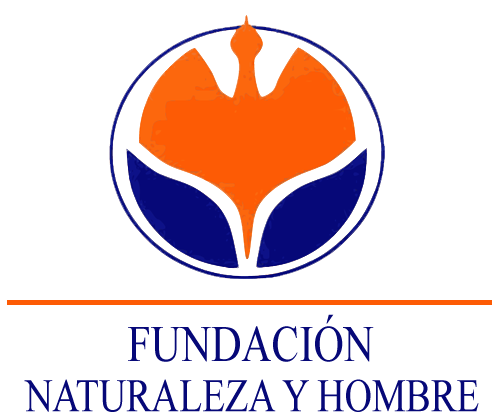- LIFE Miera
- LIFE en acción
- Recursos
- Proyectos LIFE+
- Trabajo en red
- English version
- Contacto
C.1. Improvement of peatland habitat
The Montaña Oriental SCI presents a large number of peat bogs located on glacial areas on slopes or in holes that feed on water from streams and water rises. Much of these peat bogs, located mainly in public forests, are in a lower status of conservation due to extensive cattle ranching, which produces impacts such as trampling, browsing by livestock, burning or drainage to prevent flooding.
The typical peat bogs of The Montaña Oriental are those that are formed from sphagnums. It is a very slow process that usually goes back to the last ice age, about 10,000 years ago. The shallow lakes formed in the glacial valleys were waterproofed with clays or from the mother rock itself. Under the right conditions of cold and humidity the sphagnums begin to grow and the peat is generated. With the passage of time small tumuli or inclined mounds are formed, known as mamelons. These formations are higher than the surrounding landscape and are disconnected in their growth of the water level (the phreatic water), which feeds the entire peat bog. The sphagnums that grow in these mounds depend entirely on rainwater to survive, and act as giant sponges to retain as much moisture as possible. These mamelons are surrounded by depressions of the terrain, also called channels, in which there is a more or less permanent flooding.
The action will consist of the restoration of three peat bogs with two objectives: to restore the environmental conditions of the ecosystem and to restore the flora of the peat bog, through the propagation of plant propagules of the desired species to recreate the peat bog.
C.2. Restoration of montane forests ecosystem
This action will consist in the restoration of the forest ecosystem in certain areas of the Montaña Oriental SCI and Valnera Mountains. For this, the necessary plant will be produced in El Pendo tree and plant nursery and, after the necessary time for its development and growth, it will be planted in the selected locations.
The selected areas are marked by a strong deforestation of anthropic origin and secular character, which prevents the development of their potential habitat, 9120, Atlantic acidophilic beech forests with undergrowth of Ilex and sometimes Taxus (Quercion robori petraeae or Ilici-Fagenion).
Specifically, the reforestation will be carried out with 1-2 sap trees, with a planting density of between 600 and 800 specimens / hectare. The conformation of the species will be influenced by the specific location of each plantation, its altitude, the depth of the soil, orientation, etc. Among the species to be used, there will be beech (Fagus sylvatica), oak (Quercus petraea), birch (Betula alba), rowan (Sorbus aucuparia), holly (Ilex aquifolium) and common hawthorn (Crataegus monogyna).
These works will be carried out by the forestry teams linked to the project and will count on the collaboration of volunteer actions.
C.3. Improvement of riparian forest habitat
This action will be carried out jointly in the River Miera and Montaña Oriental SCIs, on the habitat *Alluvial forests of Alnusglutinosa and Fraxinus excelsior (Alno-Padion, Alnionincanae, Salicionalbae) and exclusively in the Montaña Oriental SCI on the habitat Gallery Forests of Salix alba and Populus alba. It will consist in the creation of new riverside forests, in areas where this formation is absent, as well as in the restoration of riverbank forests that are in an unfavorable state of conservation. In addition, cleaning work will be carried out on garbage present in the Miera River and its main tributaries.
C.4. Improvement of estuarine habitat
The mouth of the Miera River in the Bay of Santander forms an estuary subjected to intense anthropogenic pressures, with a wide intertidal surface and with a mixture of fresh and salty waters, and partially filled by sediments of fluvial origin. In the estuary there is a salinity gradient, from the fresh water inlet zone, in the interior, to the open sea, outside the SCI.
The work to be done in this action will focus on the restoration of halophytic communities located in intertidal and supra-tidal areas, which are facing a serious problem of invasion by allochthonous species adapted to this saline environment: the chilca (Baccharis halimifolia) and the pampas grass (Cortaderia selloana). For this reason, the elimination of these invasive species will be carried out using the most favorable techniques to avoid possible sprouts, although the lack of impacts for the wetland ecosystem will always prevail.
C.5. Improvement of dune habitats
This action will focus on the dune ecosystem of the SCI Dunas del Puntal and Estuary of Miera River, specifically around the villageof Somo. The dune system extends over more than 4 kilometers, from Loredo to Punta Rabiosa, at the end of the point that tends to close the circulation of the estuary, that is, the Bay of Santander.
The works that will be carried out in the tertiary dune will consist in the elimination of invasive species: pampas grass, acacia, eucalyptus, honeysuckle andcrocosmia; clearing and coppicing with standars in areas with high density of scrubland; cleaning of garbage and uncontrolled dumping; revegetation with autochthonous species typical of the dune ecosystem and installation of interpretative signage.
C.6. Restoration of coastal heathland
The coastal heath is a shrubby formation of small size and cushioned aspect due to the action of the marine winds, characteristics of rocky headlands and coastal cliffs. The strong winds and saline spray (tiny drops of salt water and salt particles that accumulate on the plants) give shape to these coastal heathlands. It is characterized by the presence of heather species resistant to coastal environments (Erica vagans and E. cinerea) and two species of gorse (Ulex europaeus and U. gallii), typical of Atlantic heathland, as well as species native to coastal ecosystems (such as Angelica pachycarpa, Silene uniflora, Armeria maritima, Plantago maritima, Leucanthemum crassifolium).
These heaths are located in coastal areas on rocky substrates (acids or limestone) that are poor in nutrients. The action of the project will focus on the heathland present on the island of Santa Marina, located a short distance away from the land in front of the village of Loredo with an area of coastal heathland of 10 hectares approximately. However, the presence of invasive eastern baccharis (Baccharis halimifolia) and pampas grass (Cortaderia selloana), threats the development and presence of this heathland on the island.
The action will consist in the elimination of the invading alien species and the subsequent planting of the species typical of the heathland, using seeds gathered on the Island of Santa Marina to be planted in El Pendo nursery. The species chosen include Erica vagans, Erica cinerea, Ulex europaeus and Ulex gallii.
C.7. Improvement of Woodwardia radicans habitat
Based on the information collected in action A.1, a double work will be prepared. On one side, the best populations will be protected and Woodwardia radicans will be replanted in areas of potential interest for the species, along the Miera River SCI.
C.8. Improvement of salmon habitat
The main problem for salmon in the Miera River is the presence of water jumps, as physical barriers to their migration. This action will consist in the elimination of these barriers installing scales for fishes, in the dams of Revolvo, Arral and Rubalcaba, all located in the municipality of Liérganes. The works will be carried out based on the constructive projects written in action A.4.
C.9. Improvement of otter habitats
The habitat of the otter will be improved thanks to the implementation of other conservation actions already explained, specifically the improvement of the riparian forest and the elimination of the barriers for salmonids. However, it is proposed to carry out other specific actions for the otter. Like, the planting of hedges on the banks, the improvement of ponds and water holes suitable for the otter, the creation of shelters or the creation of underpasses on bridges.
C.10. Creation of Entomological Reserves
According to the information obtained in action A.2, Entomological Reserves will be declared in the SCIs before the end of the Project. In order to designate an Entomological Reserve, it is mandatory to carry out a preliminary study of the insects that the future Reserve hosts and to show the existence of arthropod species included in the Habitats Directive or, in the absence, species included in protected lists of species or be an area especially relevant for the wealth and abundance of this group of animals.
This type of reserves, granted by the Spanish Entomology Association, is voluntary and represents an emblem for the conservation of the arthropod biodiversity of a specific place. The conservation of the reserves is the responsibility of the owner who, advised by experts of the Spanish Entomology Association, will ensure the maintenance of the reserves in good conditions. In this way, certain limitations of use will be maintained and conservation actions will be carried out that include the monitoring of the entomofauna and the conservation status of its habitats, as well as signage with panels and, if necessary, protective fencing.
OFICINAS CENTRALES FNYH
Dirección: Av. De España Nº 25 Entlo, 39610 El Astillero Cantabria
Tlf: 942 55 91 19 / 679181483
fundacion@fnyh.org
DELEGACIÓN PARA PORTUGAL
Dirección: Rua do Conde de Redondo 8-5º dt 1150-115 Lisboa Tlf: (++351) 919 784 981 crc@erena.pt
CASA DE LA NATURALEZA-MARISMAS DE ALDAY
Dirección: C/ Alday (junto al parking de Valle Real), Maliaño, Cantabria
Tlf: 679 181 472
educacionambiental@fnyh.org
DELEGACIÓN PARA SUDAMÉRICA
Iguazú iguazuconservation@fnyh.org
ECOMUSEO-FLUVIARIUM DE LIÉRGANES
Dirección: C/ Camino Real, 9, 39722 Liérganes, Cantabria
Tlf: 942 52 81 96
fluviarium@fnyh.org
DELEGACIÓN PARA ÁFRICA
Tanzania fundacion@fnyh.org
VIVERO Y CENTRO ETNOBOTÁNICO EL PENDO
Dirección: 39609 Camargo, Cantabria
Tlf: 942 25 88 08
vivero@fnyh.org

ESTACIÓN BIOLÓGICA CAMPANARIOS DE AZABA
Dirección: Camino de La Alamedila, SN 37497 Espeja, Salamanca
Tlf: 923481401
campanarios@fnyh.org
